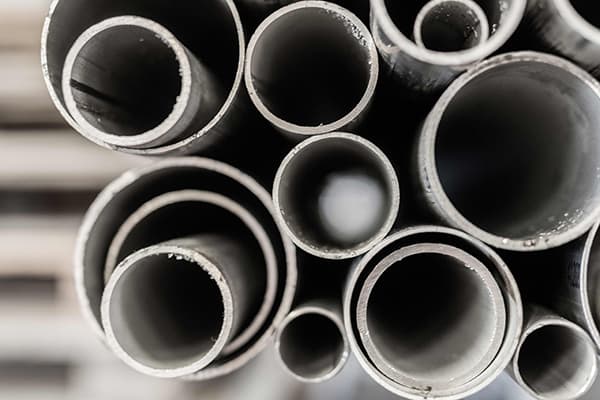The Material Type to Manufacture 304 and 316 Seamless Stainless Tubing

Image Description: Seamless Stainless Tubing
From hypodermic needles to dosing lines, stainless steel tubing is widely renowned for its strength, durability, and corrosion resistance. Advancements in manufacturing technology have allowed for some blocks of stainless steel to be drawn into long lengths of tubing. This tubing is seamless, which, as its name implies, has no seam on its body, unlike its welded counterpart. Welding is still required at its ends to connect more lengths of tubing. However, fewer welds along its complete length make it less susceptible to leaks and make it more resistant to higher pressures. 304 and 316 grade steel blocks are mostly used to manufacture stainless seamless tubing, but they too have sub-variants that may be more suitable for a particular application. A number of variables need to be accounted for such as temperature (external and internal), pressure, sanitary requirements, flow capacity, and the corrosive properties of the environment.
Stainless Steel Grades:
304
304, also known as 18/8 steel, is the most common stainless steel variant used globally. It has a high composition of chromium (18-20%) and nickel (8-10%), which give it chemical resistance properties. It is for this reason that most tubing applications, like those under harsh environments, those that carry corrosive chemicals, or for the food and beverage industry, require tubing made out of 304 stainless steel.
304L
The problem with seamless tubing is that the extrusion process for manufacturing limits it to a certain length. Most industrial settings require continuous piping networks that incorporate multiple lengths of steel tubing welded at their ends. Welding 304 grade steel introduces chromium carbon precipitation. The phenomenon causes chromium and carbon to combine, weakening the weld by taking away the steel's corrosion resistance properties. Hence, 304L steel is a better alternative for such applications as it contains lower carbon (> 0.03%) than 304 steel, mitigating chromium carbon precipitation.
304H
Like the 304L variant, the 304H stainless seamless tubing is another alternative to the 304 variant. It contains a higher level of carbon (up to 0.1%) content compared to 304 steel. This type of steel is not good for continuous piping lengths but can be used for applications requiring intermittent tubing that can tolerate higher heat and pressure along with corrosion resistance. Such tubing can be found in the oil and gas industry as well as some chemical processing plants that require materials to be transported at high temperatures into tanks and silos.
316
Though seamless stainless tubing made out of 304 steel is highly resistant, it is no match for chloride attacks, rendering it ineffective in offshore and marine applications. Chloride salts, when deposited on its surface, can penetrate the chromium oxide layer, leading to corrosion, and in turn, weakening of its structure.
316 steel's chemical composition is similar to 304 steel; however, it has an additional metal, molybdenum (2-3%), added that gives it resistance to chloride attacks.
Like 304 steel, it too comes and L and H variants. The L variant is versatile and can be used to form seamless stainless tubing for food and beverage, medical, water treatment, and marine applications.
316 seamless stainless tubing is much more versatile and resilient than its 304 counterparts. However, it comes at a higher cost due to its manufacturing process and pricey raw additives. Cost is one of the many factors one has to account for designing tubing networks for industrial applications. A good design incorporates various materials for different parts of the system such that its benefits outweigh the cost of procurement, installation, and maintenance. These steps ensure smooth operations with minimal downtime for industrial processes.